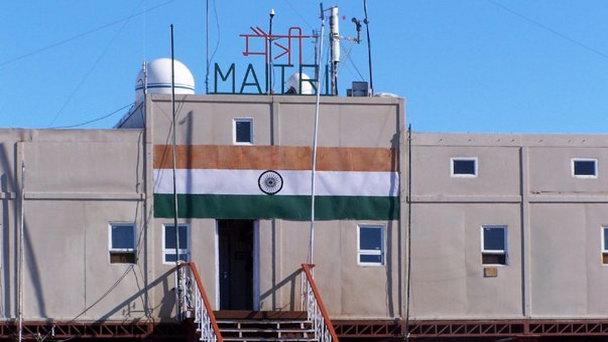Maitri, which is one of India’s Antarctic research stations and has been operational for over 35 years, is in a desperate need of an upgrade while the work for the same is being carried out by National Center for Polar and Oceanic Research (NCPOR), said Javed Beg, director of the centre.
India has two operational research stations at the South Pole, namely Bharati and Maitri. The first station built before 1985, Dakshin Gangotri, now operates as a transit base camp majorly for supplying goods.
Maitri Station
Built in 1989, Maitri station is located in a mountainous region called the Schirmacher Oasis, which is located 90 kilometres from the first Indian base. Maitri is a large U-shaped building. Only small compact modules for seasonal employees are moved outside. During the summer (daylight) season, a helicopter operates at the station, on which scientists are sent into the mountains to conduct research. A telescope is also installed at the Maitri station. About 25 people are constantly conducting glaciological, biological and meteorological studies in the station.
Since 1983, India has been actively involved in Antarctic scientific research, and currently, Maitri is its main scientific outpost in the region.
Every year, NCPOR-coordinated trips with researchers, meteorologists and Indian scientists are sent to Antarctica, where they spend a month to a year between seasons maintaining equipment, conducting other scientific activities along with collecting in situ samples.
According to Beg, there is an immediate need to remodel the 35-year-old Maitri station and the NCPOR is focused on the same.

Maitri is an important station built to operate for ten years and allows scientists to collect meteorological, geophysical and geological data. These data help in drawing timely conclusions and understanding climate change and other scientific fields. Therefore, the continuation of the operation becomes essential.
The plan proposed by the Indian Ministry of Earth Sciences indicates that the process of identifying a more environmentally-friendly and favourable site is underway. Post-renovation, the station would be a green facility capable of housing more scientists, both in winters and summers. With increased research opportunities requiring international collaborations and harsh weather conditions, Beg said building the third research station was not feasible.
He says that Antarctica is a vast continent and having just two stations for research areas was not enough. On the other hand, building more stations also does not serve as a viable option. Beg further added that research activities can be carried out through collaborations with other countries that have similar areas of interest.
Countries with multiple research stations at the South Pole include France, the UK, Germany, the US, Australia, Belgium and Chile.
2021-2030 has been declared as the Decade of Ocean Science for Sustainable Development by the United Nations; since then, several initiatives have protected the sea and oceans, improved coastal livelihoods, gained knowledge of the oceans, and also the restoration of coral reefs with an objective of increasing the ingenuity of the oceans.
The NCPOR is the nodal agency for the national project titled “Mapping India’s Exclusive Economic Zone”, says Beg. With the help of two collaborating institutions, MoES-National Institute of Ocean Technology, Chennai and CSIR-National Institute of Oceanography, Goa, studies are underway to identify hotspots along the vast Indian coastline that covers 7,500 km.
He said that together, they have studied and mapped India’s exclusive economic zone while the data which has been generated will act as the baseline data for future studies.
Deep Ocean Mission
India stands among the few nations to have dedicated ocean missions. Rupees 4 billion deep ocean mission, led by the MoES, was announced by India around two years back. Under this mission, scientists will launch a manned submersible, conduct deep-sea mining, conduct deep-sea studies, develop ocean climate change technology and advisory services for deep-sea biodiversity exploration and conservation, and establish a marine station for ocean biology in the Indian Ocean. Apart from the above, projects contributing to the blue economy planned for the next decade have also been announced by the country.
The study of the Indian Ocean is of immense importance as it is the third largest of the oceans. Another reason is that it enjoys a unique location, therefore, provides vital shipping lanes for some of the largest economies in the Asian region.
The NCPOR Director further said that in addition to trade, exploration and scientific research in the Indian Ocean is essential to understand its response to climate change, tsunamis, earthquakes, and other hazards. Scientific research also deepens the understanding of how human activities affect the Indian Ocean.
